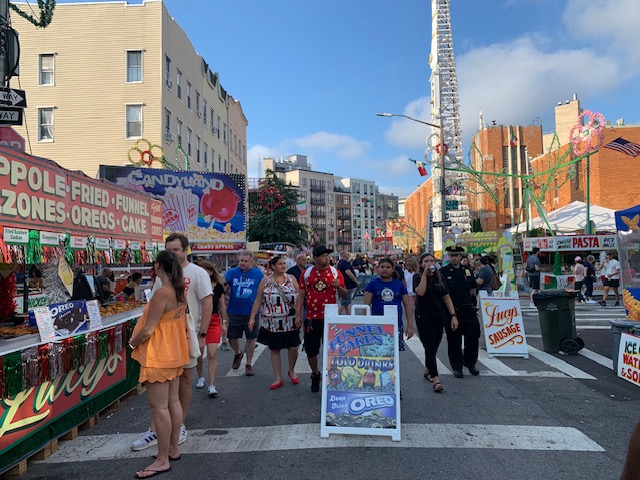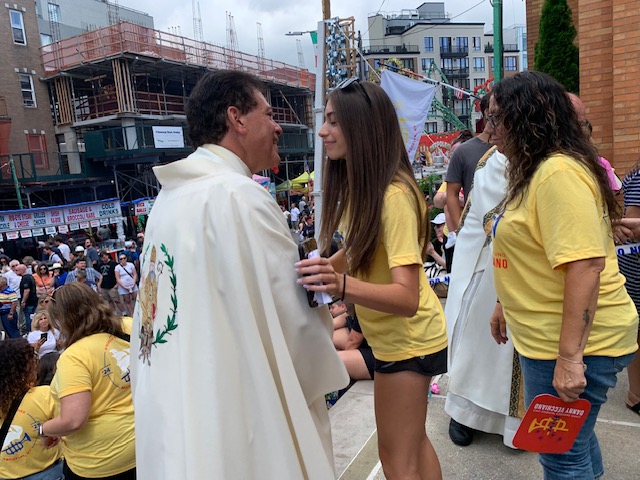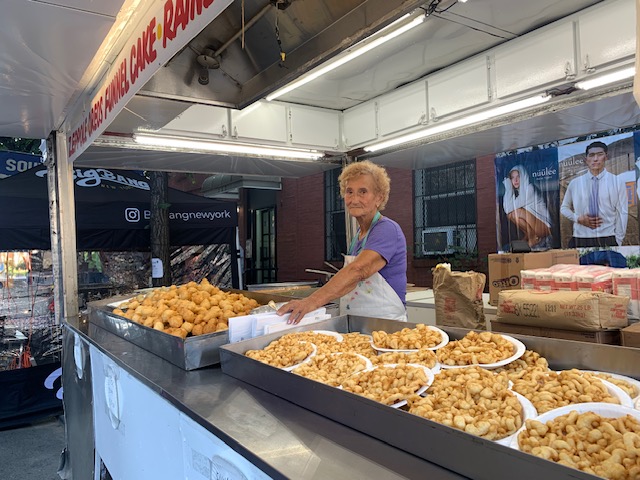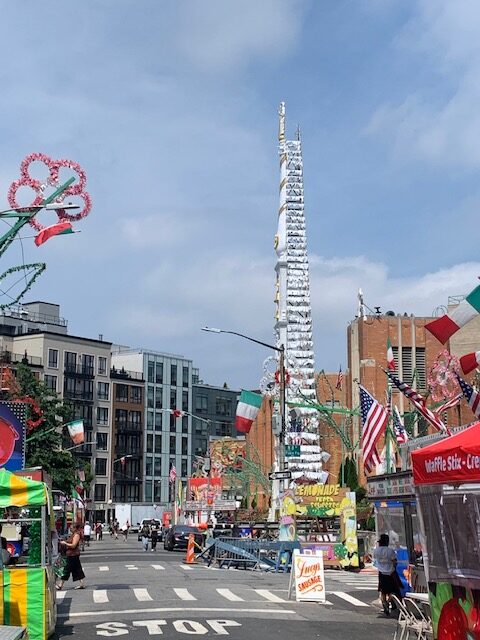There is a moment when Brooklyn feels like a scene straight out of The Godfather: the band playing, men in white shirts and gold chains, the smell of grilled sausage, and an atmosphere heavy with ancient devotion. In one of its neighborhoods, Williamsburg, under the relentless July sun, along the streets of the parish of Our Lady of Mount Carmel, the community gathers for one of the most spectacular and heartfelt celebrations of the year: the Feast of the Giglio. Here, the sacred and the profane intertwine in a collective ritual infused with faith, diaspora, and belonging.

The ceremony has its roots in Campania, more precisely in Nola, a town in the province of Naples. It was there, centuries ago, that the tradition began of carrying large obelisks made of wood and papier-mâché in procession to honor Saint Paolino, bishop and patron of the city, celebrated for saving his people and returning home after a long exile greeted, according to legend, by farmers with eight white lilies. The act of “lifting the lily” became a symbol of deep purity, devotion, and gratitude.

At the end of the 19th century, many people from Nola emigrated to the United States in search of work and a better life, bringing this solemn tradition with them. And so, in 1903, the parish hosted the first American version of the feast, which has continued without interruption to this day, now in its 138th edition.

For a few days, the neighborhood transforms: a large deployment of law enforcement watches over every corner, but without dampening the mood. It’s a full, joyful celebration reflected in the faces of families with children, groups of friends sitting on sidewalks with Italian ice in hand, balloons, and food stalls overflowing with zeppole and stuffed sandwiches. The accompanying food fair has the nostalgic flavor of a 1970s amusement park: colorful lights, folk music, and that suspended feeling between past and present that only living traditions can preserve.

The heart of the celebration, however, remains the “Alzata del Giglio” (“Lifting of the Lily”), both a solemn and spectacular moment. The towering obelisk over 85 feet tall, is hoisted onto the shoulders of the famed Giglio Boys, men of all ages who have been preparing for weeks for this act of devotion and collective strength. Beside them, a wooden ship, the vessel the Saint used is also carried by hand, in a ritual choreography that culminates in the meeting of the two structures: a sweeping dance, driven by music, beneath a rain of confetti that seems to bless every movement.

The energy is intense, almost mystical. The sweat and strain of the lifters, as well as the inch-perfect coordination of their movements all speak of an effort that goes beyond the physical. Each year, among participants and spectators, gold jewelry shaped like the symbolic flower, religious relics, and patron saints stand out. These are signs of a sense of belonging that people carry with them not only on the day of the feast but throughout the year.

The final moment comes when the “old timers” who have participated in maybe dozens of editions, make their last round. A silent and powerful gesture, a passing of the torch.

“I come every year because in this tradition I find a piece of my roots, even though I’m not actually Neapolitan, but Sicilian,” Salvatore says with a smile, his gaze fixed on the obelisk towering in the sky. As the lifters prepare for the final hoist, he remains there, motionless, perhaps thinking of Italy, a country he’s never truly seen, but still feels deep down is his own.













